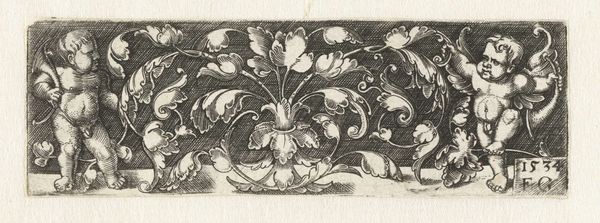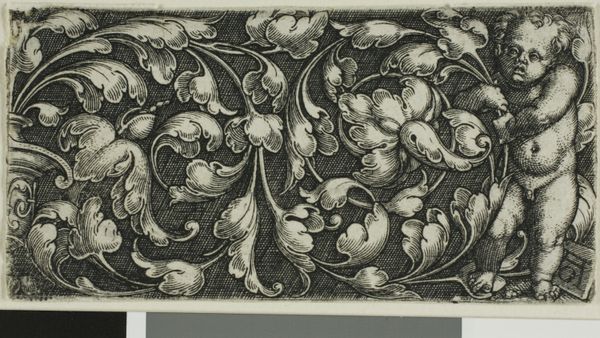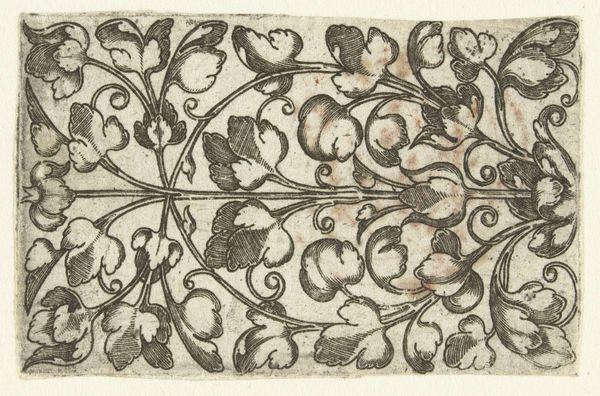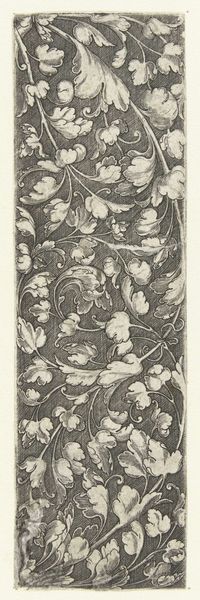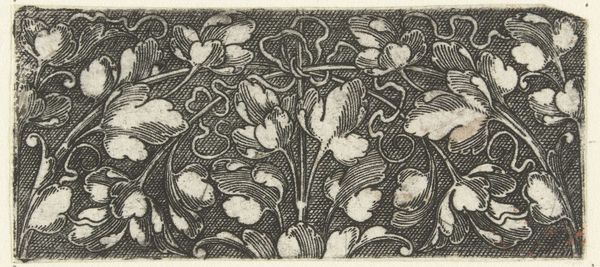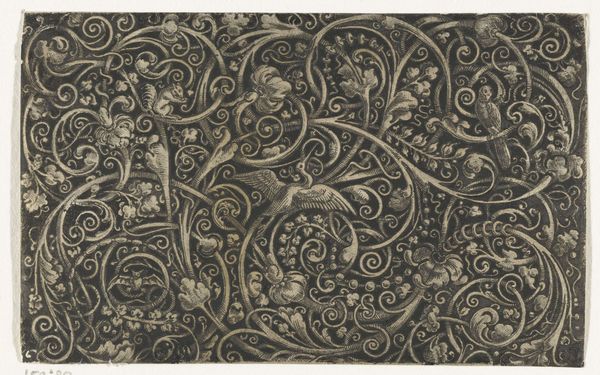
print, engraving
#
pen drawing
# print
#
geometric
#
line
#
northern-renaissance
#
decorative-art
#
engraving
Dimensions: height 26 mm, width 78 mm
Copyright: Rijks Museum: Open Domain
Curator: Here we have "Bladranken die aan beide uiteinden van het fries ontspruiten," or "Leaf tendrils sprouting at both ends of the frieze." This anonymous engraving, dating from sometime between 1500 and 1600, showcases the decorative arts prevalent during the Northern Renaissance. Editor: It's like nature trying to escape a really organized, geometric garden. There’s this struggle between the wild leaves and that super rigid background. Curator: Exactly! The piece demonstrates a beautiful tension. Note the linear quality achieved through the engraving process; it emphasizes structure even within the organic forms. The symmetry—how the leaf tendrils mirror each other from either end—highlights compositional balance, yet there's asymmetry in the individual leaves, preventing absolute rigidity. Editor: I can almost feel the artist meticulously carving those tiny lines, trying to wrangle chaos into order. It makes you wonder if they were also trying to control some part of their own life. Curator: An interesting point. Perhaps the artist was working with philosophical notions that human artistry is our way of ordering the world around us. The very act of depiction tames raw nature. Editor: Or maybe, just maybe, they were doodling to relieve boredom. Still, the sheer repetition… it’s hypnotic, like those intricate Celtic knots. This, I find calming and kind of makes me want to see the artist that made it have their peace, too. Curator: Well, regardless of motivation, it’s fascinating how an apparently simple decorative frieze employs geometric form to give organic life its dynamism and structure. Editor: And it turns out to speak to this strange part of our desire to be contained by shapes even though there's beauty to be found escaping those structures. It sure gave me something to chew on today!
Comments
No comments
Be the first to comment and join the conversation on the ultimate creative platform.

